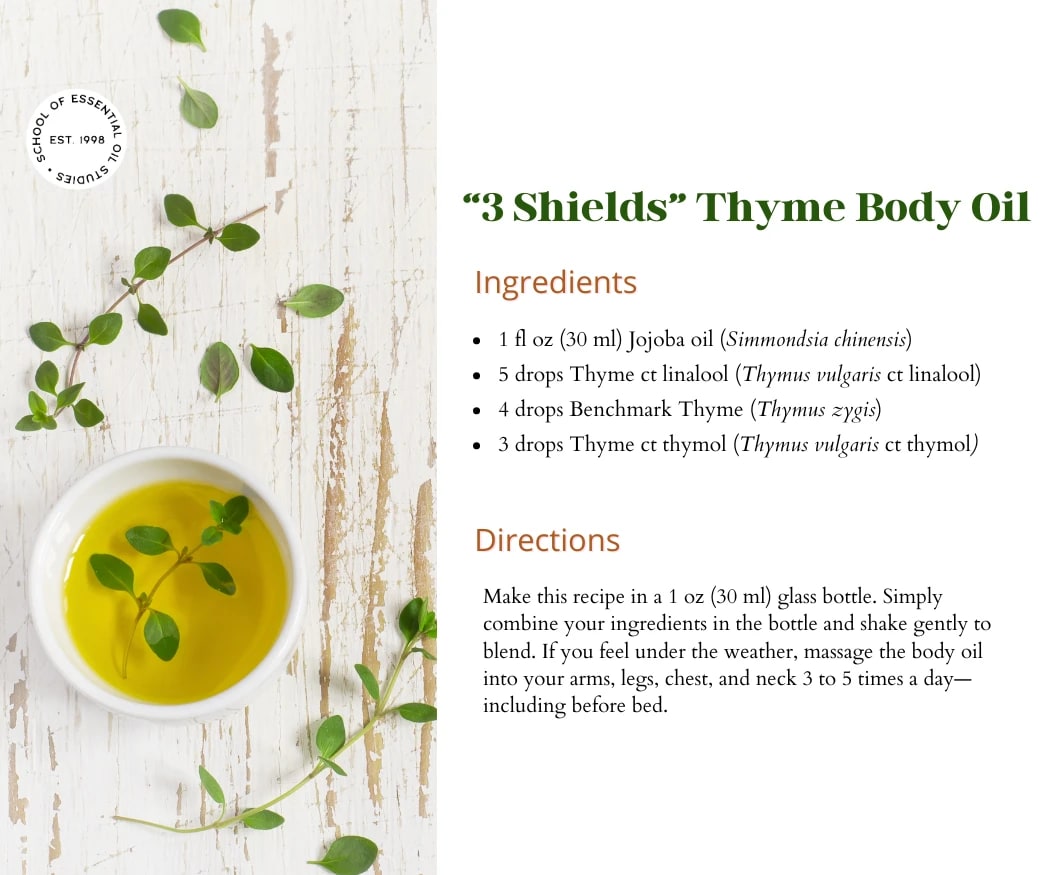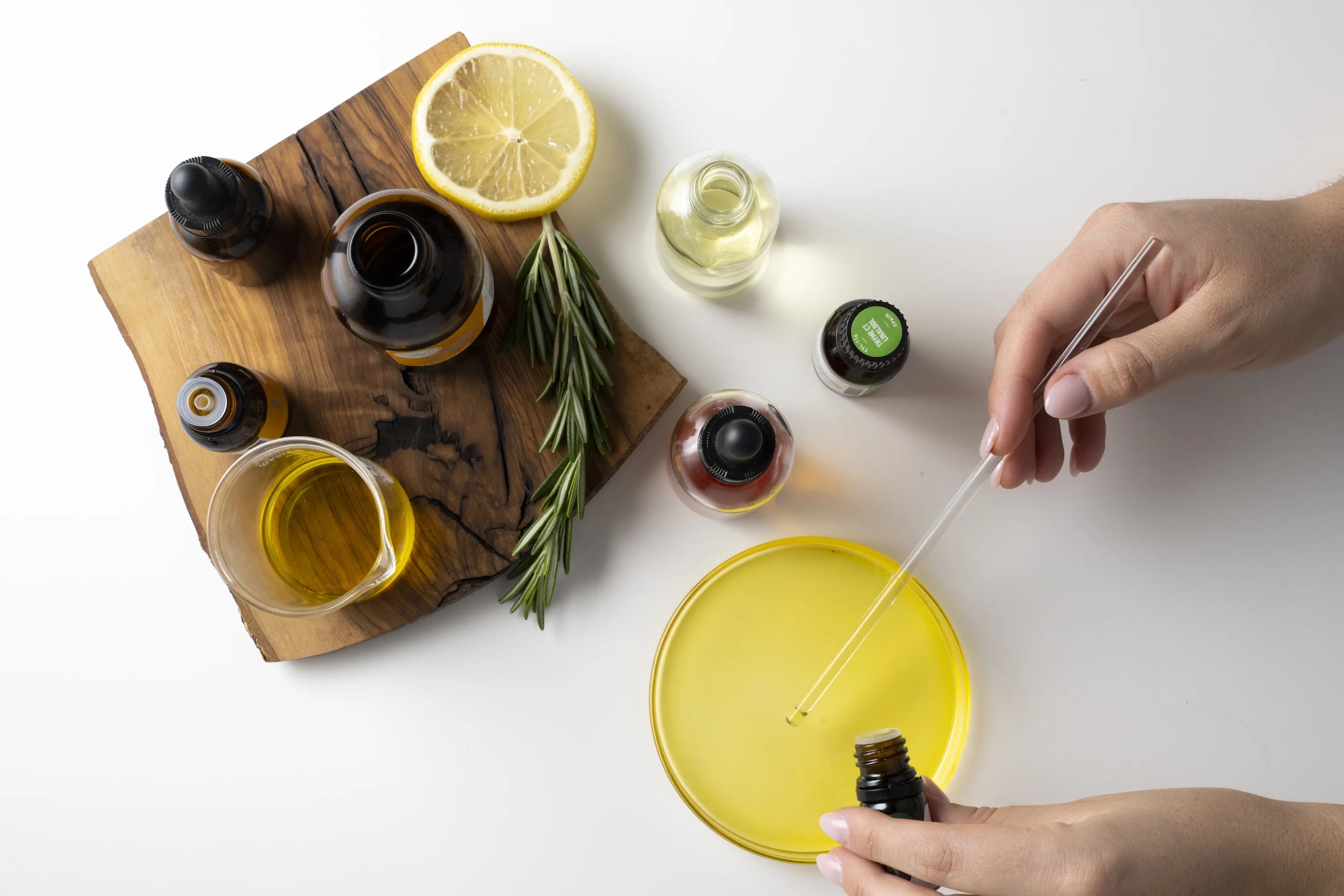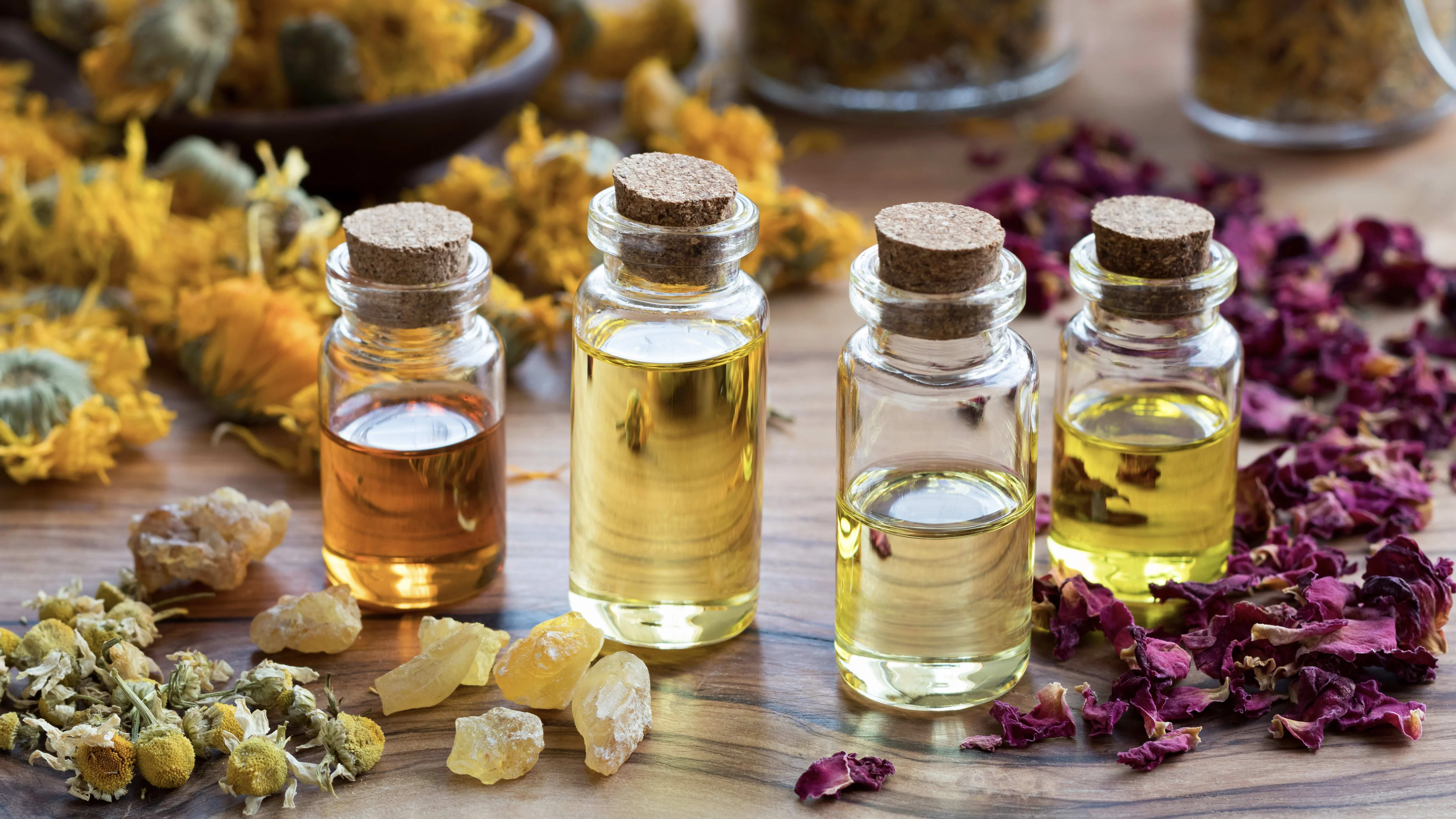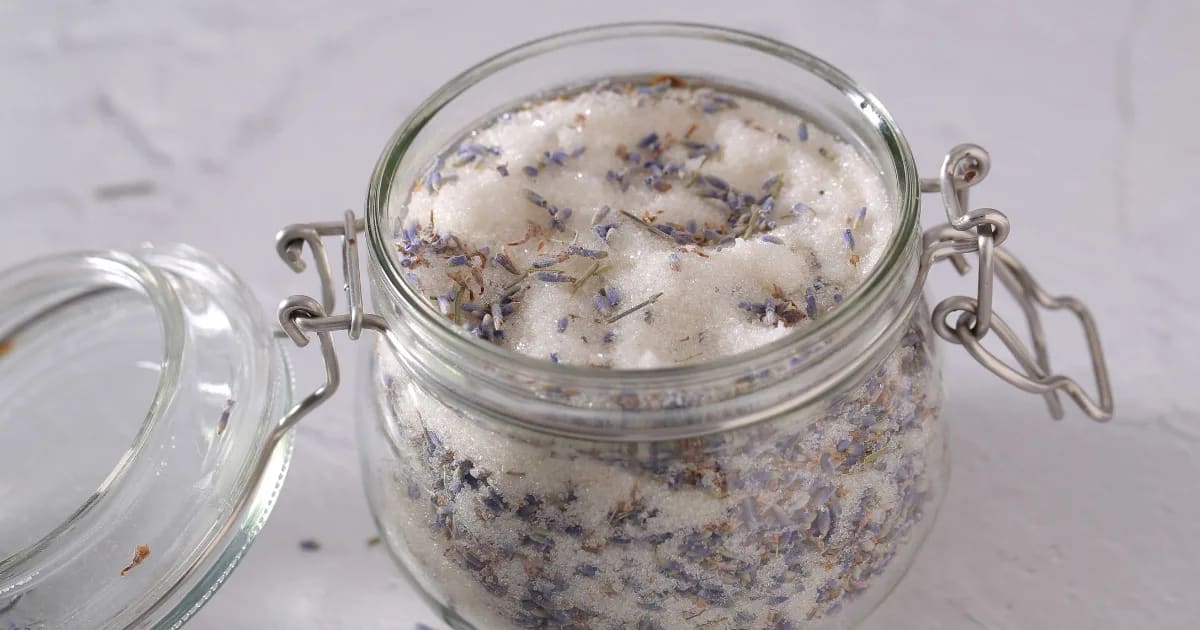What’s in Your Essential Oils? Let's Compare 3 Thymes

Every Batch of Oil is Unique
Have you ever ordered the same cup of coffee at two different cafes, only to find each cup tastes different? It’s not just about the beans. Factors like where they were grown, the elevation, growing practices, and the roasting method all shape the flavor. One cup might be bold and earthy, while the other is smooth and bright.
Essential oils are no different. Every batch is influenced by its origin—country, altitude, soil, and climate. Some plants even produce different chemotypes, meaning the same species can yield oils with entirely distinct chemical compositions. That’s why knowing what’s in your bottle is essential for using oils safely and effectively.
Two batches of Thyme ct linalool (Thymus vulgaris ct linalool) will never be exactly the same—even if they’re from the same region. You may even notice variations in their aromas. One batch of Thyme ct linalool may be quite herbal, while another might have stronger floral notes.
In today’s post, I explain why it’s important to know what’s in your essential oils and how you can get that information.
We’ll cover…
How knowing what’s in your oils helps you make effective blends.
The variations between 3 kinds of Thyme essential oil.
Where you can find information about what’s in your bottle.
A recipe to protect your health during cold & flu season.
Plants are always responding to their environments, and the essential oils they produce reflect this. Let’s explore what this means for your blending.
3 Types of Thyme
Thyme has adapted so well, responding to so many different growing conditions, that there are now over 300 varieties of Thyme in existence.
Three popular types of Thyme used in aromatherapy are:
Thyme ct thymol (Thymus vulgaris ct thymol)
Thyme ct linalool (Thymus vulgaris ct linalool)
Benchmark Thyme (Thymus zygis)
Note the “ct” present in the first two oils’ names. That stands for “chemotype.” It refers to two distinct varieties of Thyme oil that come from the same species of plant. Isn’t it fascinating that a single species—Thymus vulgaris—can produce two essential oils so distinct from each other, that they’re sold under different labels and used in different ways?
Thymol is a phenol component that’s incredibly potent. It’s a powerful antimicrobial. However, it can also irritate the skin and mucous membranes.
Linalool is a monoterpenol known for its soothing properties. It’s much gentler on skin and mucous membranes. Just from that snapshot of information, you begin to get an idea of why we wouldn’t always use Thyme ct thymol and Thyme ct linalool interchangeably. The thymol chemotype could cause irritation if it’s not used safely.
It’s crucial to know which oil is in your bottle.
Otherwise, it’s difficult to make safe, effective blends.
That’s why simply seeing “Thyme” on a bottle’s label doesn’t give you enough information. Even seeing the Latin name “Thymus vulgaris” doesn’t tell you enough. You have to know—is it Thyme ct linalool or Thyme ct thymol? Or is it another kind of Thyme altogether?
Let’s explore 3 popular Thyme oils, and the variations between them.
Thyme ct thymol
Studies have shown that thymol has strong antibacterial effects—it can disrupt bacterial cell membranes and internal structures.
All of that potency means it can also be harsh on skin and mucous membranes, especially if used long-term or by people with sensitive skin (including children or the elderly).
With that in mind, I sometimes choose to use this oil for inhalation rather than topical application. I also like to include it in natural cleaning products. Thyme ct thymol has a sharp, herbal, fresh aroma. Many people find it invigorating.
This chemotype of Thyme is also excellent for respiratory support and soothing painful inflammation. However, I like to balance it with skin-soothing oils, to counteract the harsh effects of thymol.
Thyme ct linalool
As I mentioned, linalool is a gentle molecule. It’s the main component in some very effective, nourishing essential oils, including Lavender (Lavandula angustifolia) and Coriander (Coriandrum sativum).
The overall composition of Thyme ct linalool still makes it a wonderful choice for antimicrobial uses. Yet it’s also soothing enough for long-term skin application. Its aroma is soft, herbal, and relaxing. Like its thymol counterpart, Thyme ct linalool also helps soothe inflammation and support respiratory health.
I consider this the gentlest variety of Thyme oil.
Benchmark Thyme
Benchmark Thyme is a bit different, as it’s a blend of four varieties of Thyme. It was developed by Maggie Tisserand, who was one of the first authors to write about aromatherapy back in the 1970s.
Maggie has crafted a variety of Thyme rich in thymol, linalool, and terpinen-4-ol (the main component found in Tea Tree, Melaleuca alternifolia).
The result is an oil that’s a potent antimicrobial, boosts the immune system, supports respiratory health, calms inflammation, and is gentle on the skin. Its aroma is a gorgeous combination of fresh, herbal, warm, and spicy. I adore Benchmark Thyme and recently wrote a series of posts about it. See the first one here (and learn how Maggie tested the oil against antibiotic-resistant Staphylococcus aureus).
Regarding its potential to cause irritation, Benchmark Thyme falls in a happy medium between Thyme ct thymol (it’s not as harsh) and Thyme ct linalool (it’s not quite as gentle).
Getting Clarity: GC/MS Reports
So how can you be sure which variety of Thyme essential oil you have?
Look for the following information on the bottle’s label:
The oil’s name
Latin name
Chemotype (if applicable)
Without that information, you simply can’t know which oil you’re working with.
I also suggest getting a batch-specific GC/MS report so you can be confident about which components are present in the oil.
A GC/MS report maps out the known components in an essential oil. It’s like an ingredient list for what’s in your bottle. I encourage you to buy from companies that have their oils tested with GC/MS technology and make these reports available to their customers.
You don’t have to be a chemist to read the report—all you have to know is which main components you’re looking for. In the case of Thyme, you’re usually looking for either thymol or linalool. Learn more about GC/MS reports on The Aromahead Blog.
Students of Aromahead’s ACP learn about the many components found in essential oils, including their effects and safety considerations. When they look at a GC/MS report, they know exactly how to interpret the information to be sure they’re using each oil to its best potential (and avoiding any safety issues). If you’re curious about becoming a student, find information on The ACP here.

“3 Shields” Thyme Body Oil
This is a recipe to help protect your immunity during cold and flu season. If you do come down with something, this blend can give your body a boost to fight off the infection. It can also help soothe muscle aches, open up your breathing, and relax you so you can get some quality, restorative sleep.
Ingredients
1 fl oz (30 ml) Jojoba oil (Simmondsia chinensis)
5 drops Thyme ct linalool (Thymus vulgaris ct linalool)
4 drops Benchmark Thyme (Thymus zygis)
3 drops Thyme ct thymol (Thymus vulgaris ct thymol)
Directions
Make this recipe in a 1 oz (30 ml) glass bottle. Simply combine your ingredients in the bottle and shake gently to blend. If you feel under the weather, massage the body oil into your arms, legs, chest, and neck 3 to 5 times a day—including before bed.
My Takeaway
When it comes to essential oils, knowledge truly is power. Awareness of what’s in your bottles allows you to use each oil with confidence and intention. Whether you're choosing a potent oil like Thyme ct thymol for cleaning, a gentler option like Thyme ct linalool for skincare, or a balanced blend like Benchmark Thyme, clarity is key.
If you're looking to deepen your understanding of essential oils and master the art of choosing them for specific therapeutic benefits, our flagship Aromatherapy Certification Program is the perfect next step. Find out more below.

REFERENCES
Altaei, D.T. (2012) Topical lavender oil for the treatment of recurrent apthous ulceration. American Journal of Dentistry 25, 1, 39-43.
Budhiraja SS, Cullum ME, Sioutis SS, Evangelista L, Habanova ST. (1999) Biological activity of Melaleuca alternifola (Tea Tree) oil component, terpinen-4-ol, in human myelocytic cell line HL-60. Journal of Manipulative and Physiological Therapeutics. 1999 Sep;22(7):447-53. doi: 10.1016/s0161-4754(99)70033-3. PMID: 10519561.
Fisher, K., & Phillips, C. A. (2006). The effect of lemon, orange and bergamot essential oils and their components on the survival of Campylobacter jejuni, Escherichia coli O157, Listeria monocytogenes, Bacillus cereus and Staphylococcus aureus in vitro and in food systems. Journal of Applied Microbiology, 101(6), 1232-1240.
Guimarães, A.G., Quintans, J.S.S. and Quintans-Júnior, L.J. (2013) Monoterpenes with analgesic activity – a systematic review. Phytotherapy Research 27, 1-15
Kowalczyk, A., Przychodna, M., Sopata, S., Bodalska, A., & Fecka, I. (2020). Thymol and Thyme Essential Oil-New Insights into Selected Therapeutic Applications. Molecules (Basel, Switzerland), 25(18), 4125. https://doi.org/10.3390/molecules25184125
Peana, A.T., D’Aquila, P.S., Panin, F., Serra, G., Pippia, P. and Moretti, M.D. (2002) Anti-inflammatory activity of linalool and linalyl acetate constituents of essential oils. Phytomedicine 9, 721-726.
Rota, M.C., Herrera, A., Martinez, R.M., Sotomayor, J.A. and Jordán, M.J. (2008) Antimicrobial activity and chemical composition of Thymus vulgaris, Thymus zygis and Thymus hyemalis essential oils. Food Control 19, 681-687





